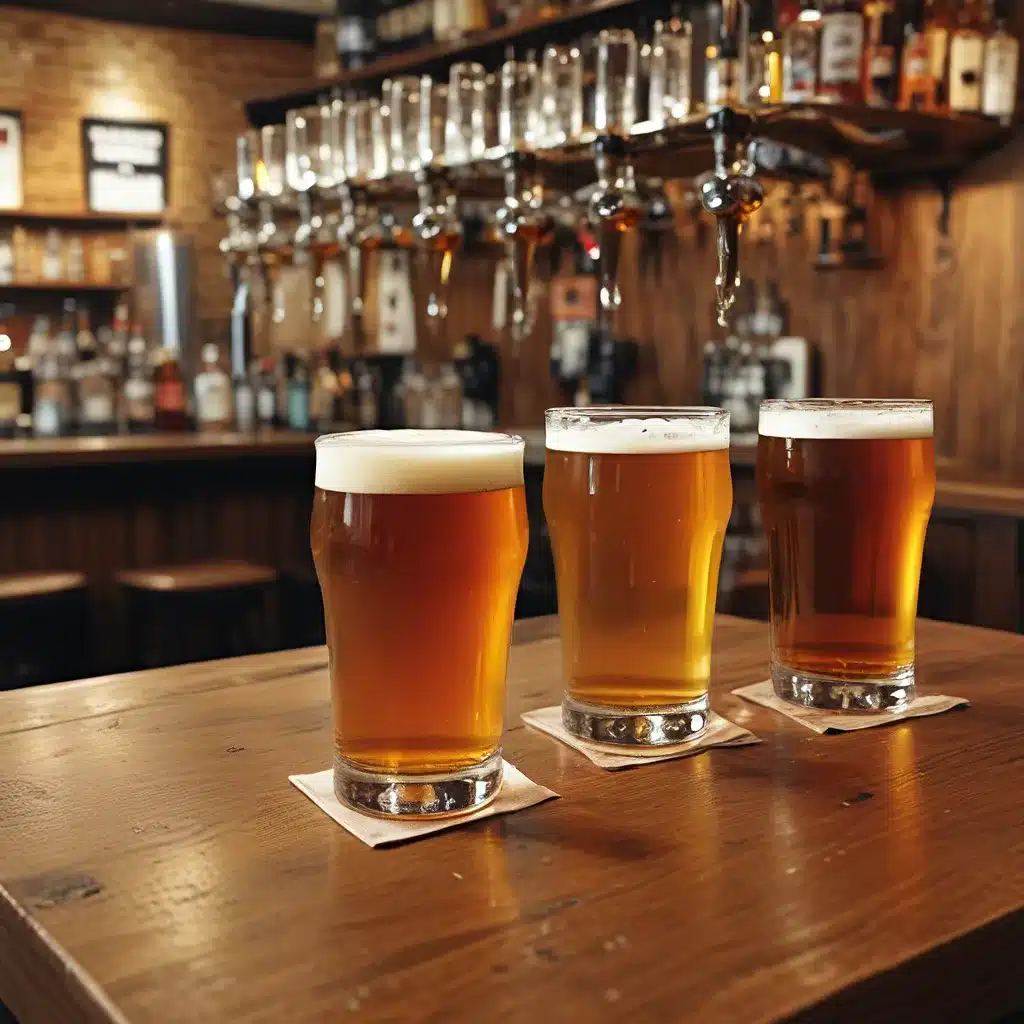
As I push open the weathered wooden doors of The Up and Under Pub, the familiar scent of hops and malt envelops me. This isn’t just any old watering hole – it’s a place where beer isn’t just a drink, but a work of art. And I’m on a mission to uncover the captivating science behind the brew that’s poured with such pride within these walls.
The Art of Fermentation
Perching myself at the bar, I can’t help but be mesmerized by the bubbles dancing in my glass. It’s almost hypnotic, watching these tiny carbon dioxide-filled orbs rise to the surface. But these aren’t just any ordinary bubbles – they’re the result of a process that’s been captivating human civilizations for millennia: fermentation.
Fermentation is, at its core, the result of microscopic organisms – yeast, bacteria, and others – transforming sugars into alcohol and carbon dioxide. It’s a process that’s as old as humanity itself, with evidence of beer-making dating back to ancient Mesopotamia and Egypt. And right here, in this cozy pub, the art of fermentation is alive and well.
The Yeast Whisperers
As I sip my ale, I can’t help but wonder about the unseen stars of the show – the humble yeast cells that are hard at work, transforming simple sugars into the complex flavors and aromas that dance across my palate. These remarkable microorganisms are the true alchemists, turning water, hops, and malted grains into the liquid gold that’s brought such joy to beer enthusiasts for centuries.
“Yeast is the heart and soul of beer,” explains the bartender, who seems to have an innate understanding of these invisible artisans. “Without them, we’d just have a glorified soda pop.” She goes on to describe the different strains of yeast, each with their own unique flavor profiles and fermentation characteristics. It’s a delicate balancing act, she says, finding the perfect yeast to complement the other ingredients.
The Science of Malt and Hops
But yeast is just one piece of the puzzle. As I glance around the pub, I’m struck by the sheer variety of beers on offer – from crisp, hoppy IPAs to rich, malty stouts. Each one, I realize, is the result of a carefully orchestrated dance between malted grains and hops.
The malted grains, often barley or wheat, provide the fermentable sugars that the yeast will transform into alcohol. But it’s the hops – those aromatic, resinous flowers – that add the bitterness, flavors, and aromas that give each beer its unique personality. The careful selection and addition of hops at different stages of the brewing process can create a dizzying array of flavor profiles, from the citrusy, piney notes of an IPA to the earthy, herbal aromas of a classic German lager.
As I delve deeper into the science behind beer, I’m struck by the sheer complexity of it all. It’s a dance of yeast, malt, and hops – each playing a crucial role in the creation of a beverage that has captivated human taste buds for millennia.
The Alchemy of Fermentation
But the magic of beer doesn’t stop there. As I look around the pub, I see patrons sipping their brews with reverence, savoring each sip as if it were a fine vintage wine. And in a way, it is – for the process of fermentation is every bit as intricate and nuanced as the art of winemaking.
Just as winemakers carefully cultivate their grapes and monitor the fermentation process, brewers are constantly tinkering with their recipes, experimenting with different yeast strains, malt varieties, and hop profiles. It’s a delicate balancing act, where the slightest tweak can result in a completely different flavor profile.
And like wine, the flavors of beer can evolve and develop over time. As the yeast continues to work its magic, the alcohol content may increase, and the flavors may become more complex and layered. It’s a living, breathing process, and each bottle or keg is a unique snapshot in time.
The Joy of Discovery
As I savor my beer, I can’t help but feel a sense of wonder and appreciation for the sheer artistry and science that goes into its creation. It’s not just a drink – it’s a window into the rich history and culture of brewing, a testament to the ingenuity and creativity of humankind.
And at The Up and Under Pub, I feel like I’m part of that legacy. As I chat with the bartender and fellow patrons, I’m struck by the sense of community and camaraderie that permeates the air. This is a place where people come not just to drink, but to explore, to discover, and to share in the joys of fermentation.
So as I raise my glass, I can’t help but feel a deep sense of gratitude for the countless generations of brewers, scientists, and beer enthusiasts who have paved the way for moments like this. And I know that as long as there are places like The Up and Under Pub, the art of fermentation will continue to captivate and delight us for generations to come.
The Up and Under Pub is a shining example of how the science and artistry of beer can come together to create a truly transcendent experience. So whether you’re a seasoned beer aficionado or simply curious about the wonders of fermentation, I encourage you to step through those weathered doors and let the magic of this place transport you to a world where the bubbles in your glass are a symphony, and the flavors are a symphony for the senses.

